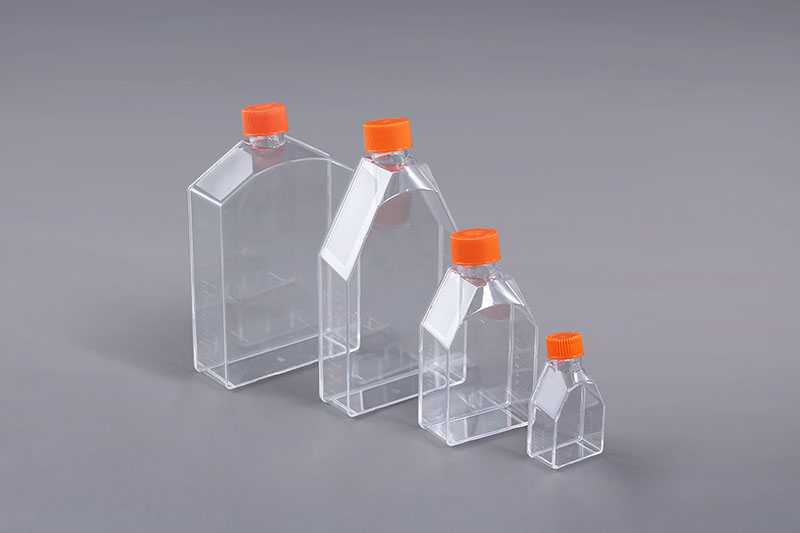細胞溶解は、細胞の透過性と活性を変化させるための重要な実験方法です。これは、細胞がウイルスに感染した後、ウイルスが宿主細胞内の栄養素を使用して自身の子孫を合成し、ウイルスの子孫が宿主細胞を破壊して細胞外に放出されることを意味します。細胞溶解実験では、細胞培養フラスコが一般的な消耗品です。細胞溶解の手順は次のとおりです:
1。培地を注ぎ、細胞培養ボトルを吸収紙に逆さまに締めて、吸収紙が培地を吸収するようにします(または、残りの培地がボトルの底に流れるように、ボトルをしばらく直立させます)。次に、ピペットを使用してそれを吸い取ります)。
2。セルの各ボトルに3mlの4℃予冷PBS(0.01M pH7.2 〜 7.3)を加えます。細胞を平らに置き、1分間穏やかに振って細胞を洗浄してから、洗浄液を捨てます。上記の操作を2回繰り返し、細胞を3回洗浄して、培養液を洗い流します。 PBSを廃棄し、培養フラスコを氷上に置きます。
3。 10ulのPMSF(100mM)を1mlの溶解緩衝液に加え、よく振って氷上に置きます。 (PMSFは、溶解液と混合する前に結晶がなくなるまで振とうする必要があります。)
4。 PMSFを含む400ulの溶解バッファーを細胞の各フラスコに加え、氷上で30分間溶解します。細胞を完全に溶解するには、フラスコを頻繁に振とうする必要があります。
5。溶解後、きれいなスクレーパーを使用して培養フラスコの片側の細胞をこすり取り(アクションは高速である必要があります)、次にガンを使用して細胞の破片と溶解物を1.5mlの遠心分離管に移動します。 (すべての操作は可能な限り氷上で行う必要があります。)
6。 12000 rpm、4°Cで5分間遠心分離します。 (事前に遠心分離機の電源を入れて予冷します)
7。遠心分離した上清を遠心分離管に0.5分間移し、-20°Cで保存します。
細胞培養フラスコは、細胞溶解実験だけでなく、Vero細胞などの実験室での中規模の細胞および組織培養にも使用されます。 、HEK 293細胞、CAR-T細胞、CHO細胞、昆虫細胞など
The FAI climbed 5.9 percent year-on-year in the first 11 months of 2018, quickening from the 5.7-percent growth in Jan-Oct, the National Bureau of Statistics (NBS) said Friday in an online statement.
The key indicator of investment, dubbed a major growth driver, hit the bottom in August and has since started to rebound steadily.
In the face of emerging economic challenges home and abroad, China has stepped up efforts to stabilize investment, in particular rolling out measures to motivate private investors and channel funds into infrastructure.
Friday's data showed private investment, accounting for more than 60 percent of the total FAI, expanded by a brisk 8.7 percent.
NBS spokesperson Mao Shengyong said funds into weak economic links registered rapid increases as investment in environmental protection and agriculture jumped 42 percent and 12.5 percent respectively, much faster than the average.
In breakdown, investment in high-tech and equipment manufacturing remained vigorous with 16.1-percent and 11.6-percent increases respectively in the first 11 months. Infrastructure investment gained 3.7 percent, staying flat. Investment in property development rose 9.7 percent, also unchanged.
 English
English



















































